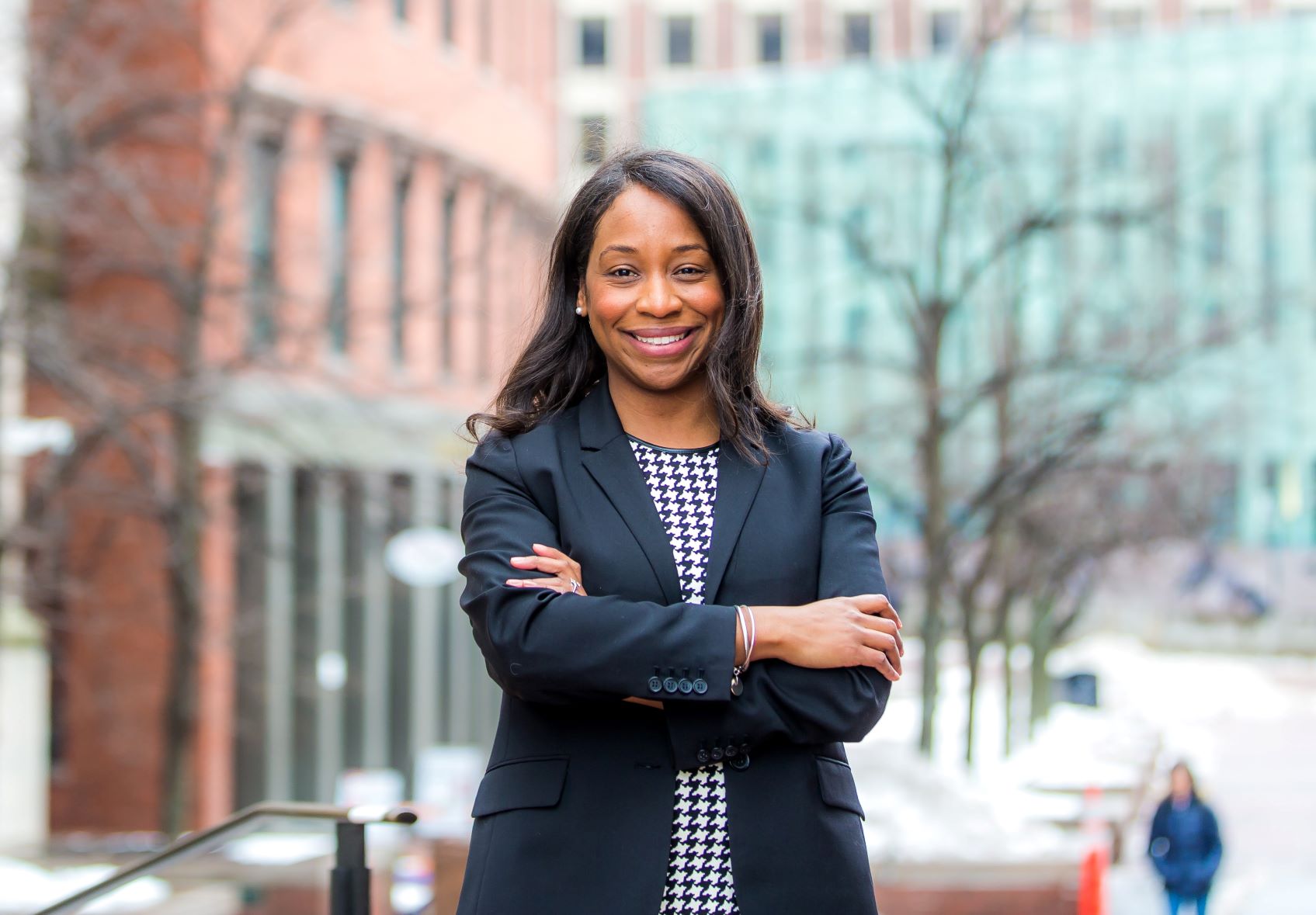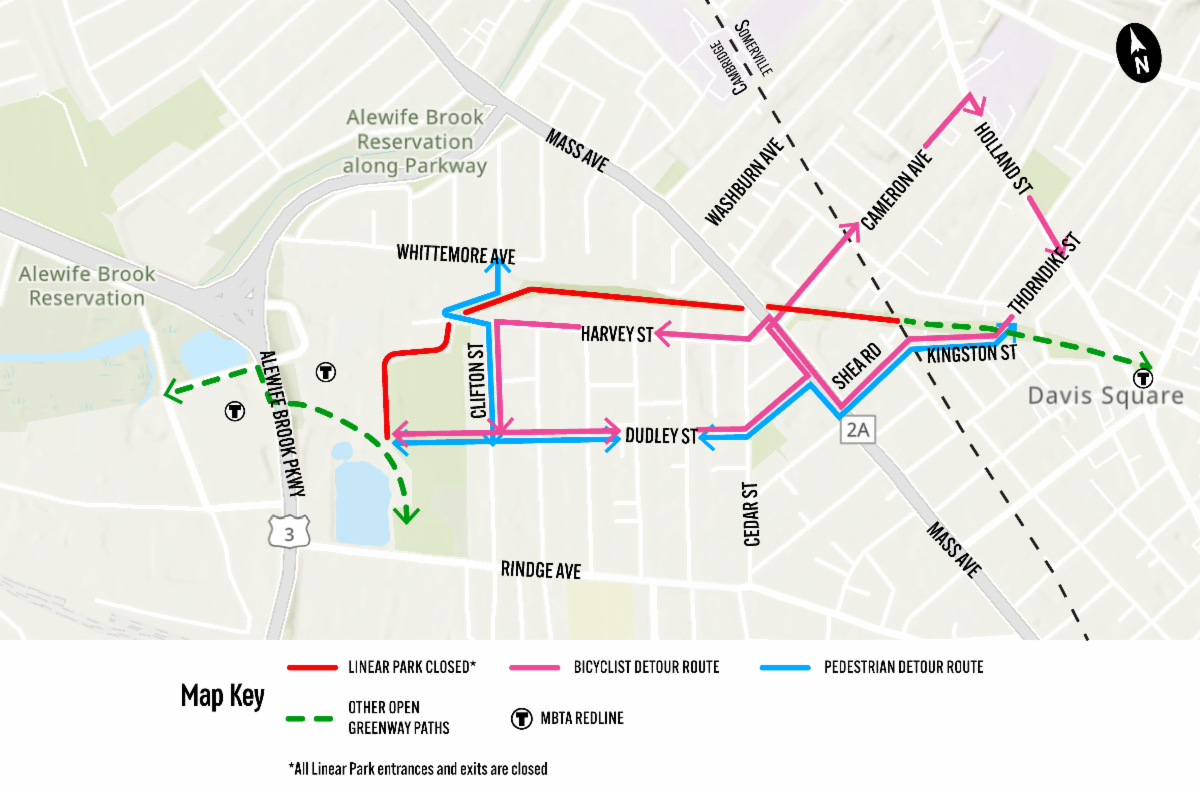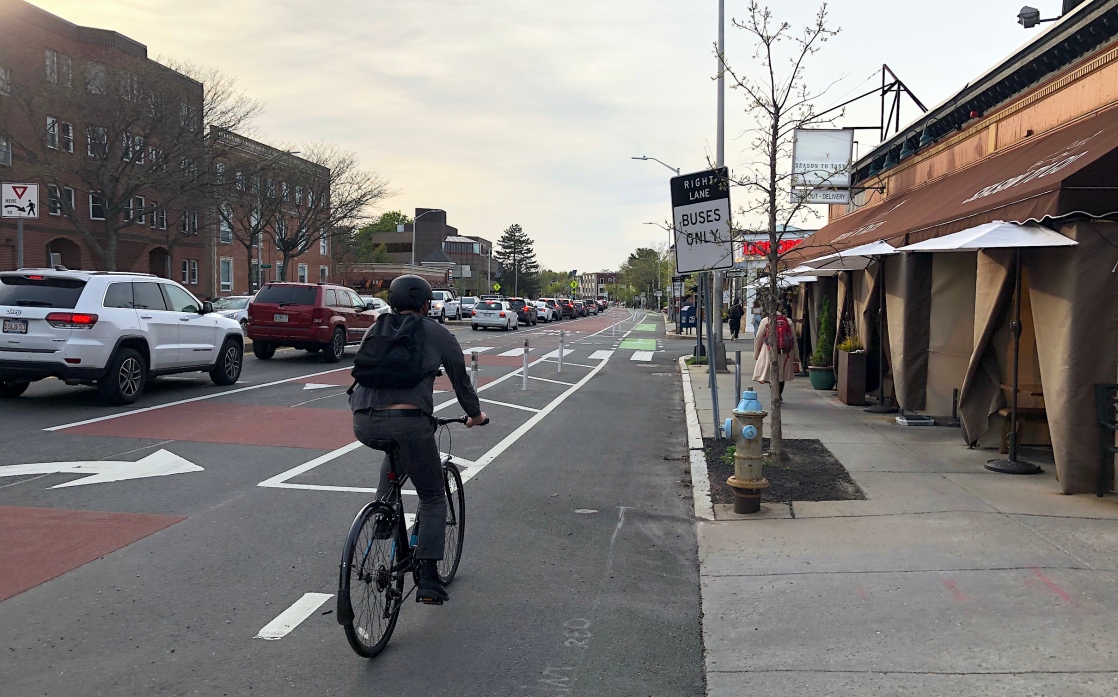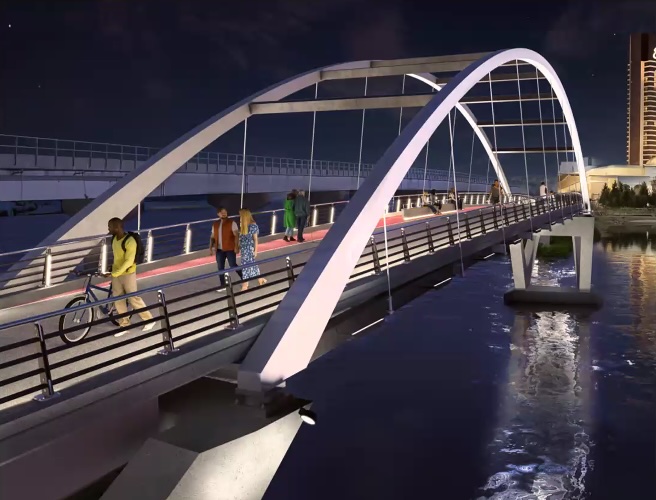Earlier this week, City Council President Andrea Campbell, who represents parts of Dorchester, Mattapan, Roslindale and Jamaica Plain, renewed her calls for accelerating street safety projects across the city after a person driving a car struck a 7-year-old boy on Groveland Street in the Lower Mills neighborhood.
"I'm grateful he was not seriously injured, but it is beyond frustrating that this happened when my neighbors have been advocating for traffic calming for years," Campbell tweeted. "Our Slow Streets and Vision Zero teams at @BostonBTD work incredibly hard and do tremendous outreach to residents to ensure their needs are met and voices heard, but they don't have the resources to implement these projects at the pace our neighborhoods and public safety demand."
Campbell also invited constituents to come to a public hearing on the city's Vision Zero policy at City Hall next Monday at 1 p.m.
StreetsblogMASS reached out to the City Council President to have a longer conversation about traffic and safety on the city's streets. The following is a transcript of the conversation, edited for clarity.
StreetsblogMASS: What kinds of concerns do you hear about most often from constituents with respect to traffic and safety?
City Council President Campbell: We hear about many issues, but the ones that rise to the stop are speeding cars, streets being used as cut-throughs, congestion, and drivers flying through stop signs or not adhering to rules and speed limits.
There are also concerns around parking - some people feel there isn't enough, and on the flip side, some are asking whether we are encouraging residents who want to use alternative transportation, or make room for better T service. We also want our buses to run faster, so there are lots of conversations about dedicated bus lanes.
Many of these issues of course connect to the conversation citywide, but particularly in my district, it’s where the inequities live. We’re dealing with transportation deserts. We’ve got people who rely on the bus more than in other parts of Boston, and the buses are delayed, so we want to see the bus system improve.
StreetsblogMASS: Your tweet yesterday said that the city's staff "don't have the resources to implement these projects at the pace our neighborhoods and public safety demand.” What kinds of resources do you have in mind that might support them better?
Campbell: In every budget hearing that we have had since I’ve been on the council, these programs have been a priority, and it’s something every district councilor in particular asks for. They tell us, ‘we hear you, we’re working on it.’
In the last budget cycle, I pushed back on them more, not only to ask them to be more aligned internally - sometimes they work in silos, which is a problem - but also asking them specifically what they need to award these grants more quickly and get improvements built in a swift manner.
They need more resources to fund the work, but they also need more human capital - the engineers and planners and expertise they need to make these projects happen.
StreetsblogMASS: Boston planners seem to spend a lot more time doing outreach trying to reassure drivers that safer streets won’t be too much of an inconvenience, while elected officials in Cambridge and Somerville seem more willing to make major changes over objections from car users.
Do you see a role for elected leaders like you to re-set the political frame for these discussions, and give the city's Vision Zero planners more confidence that, even if they’re getting yelled at by car users who want to preserve the status quo, they still have support from the city’s elected officials?
Campbell: I find that when you get out to communities and engage in a conversation from the outset, we’re more successful. When we start by talking about and agreeing what the problem is, and what the safety issues are - for instance, that we have to make room for people on bikes who are also our neighbors - we find that the conversations go really well when you start by engaging everybody.
With the slow streets program, I don’t see drivers pushing back in terms of public safety. They too want safer streets, they too want to walk to meetings and activities in their neighborhood. People who use cars are playing a role in these conversations in a more positive way than we may think.
Where it gets tricky is where we go out and place Blue Bikes stations or bike lanes with no conversations in our community. But people are up in arms in my district talking about people they know who have been hit by cars, about crashes they’re seeing. Everyone is saying we need to do something and we can’t wait for another tragedy to happen before we act.
StreetsblogMASS: Along those lines: new applications for the city's popular Neighborhood Slow Streets program seem to be on pause while city planners catch up with last year’s round of projects. Some critics have said that, instead of doing this piecemeal approach, the city should make it a policy to add these 20 mph design features like raised crosswalks and speed bumps to every neighborhood street in the city, as Cambridge has done. Your thoughts on that idea?
Campbell: It should absolutely be a citywide policy, not a competitive program. You have district councilors, different neighborhoods competing against each other for something we all absolutely need, when we all want our neighborhoods to be coming together. Even within my district, for the neighborhoods that were selected it’s wonderful, but what’s sad is there are neighborhoods that weren’t picked, where there are folks who went out and did all this work to knock on doors and put together an application, and we tell them no. And there’s still a (safety) problem there that's not being addressed.
We need a citywide policy that says, when you have residents bring complaints about speeding or crashes that involve residents dying, we need an actual rapid response. We need to truly get to Vision Zero with a citywide policy that is fully funded.
StreetsblogMASS: BTD is having a public meeting tonight to discuss their plans to prioritize buses and improve safety on Warren Street, which is one of the most heavily-used bus corridors in the region and an important corridor for may of the bus riders in your district. Have you seen the city’s proposal? What are your thoughts on the project?
Campbell: I haven't seen the proposal yet, it's mostly in my colleague Councilor Janey's district. I'm more familiar with Blue Hill Avenue, which is also being looked at, and we are going to be participating in that plan. We had a great convening of stakeholders from the state, with people from all our city departments, people from the MBTA… everyone showed up to say we need a plan and a strategy to make it more beautiful, but also safer and more efficient for people biking and taking the buses. What I’m excited about is that BTD is investing in hiring dedicated planners for the project, and that's the kind of approach I'd like to see more of.
Public hearing information:
Next Monday, November 18, the City Council's Committee on Planning, Transportation, and Development will host a hearing on the city's Vision Zero policy. Members of the public have been invited to give testimony.
Where: Boston City Hall, Iannella Chamber
When: 1 p.m. Monday, November 18






